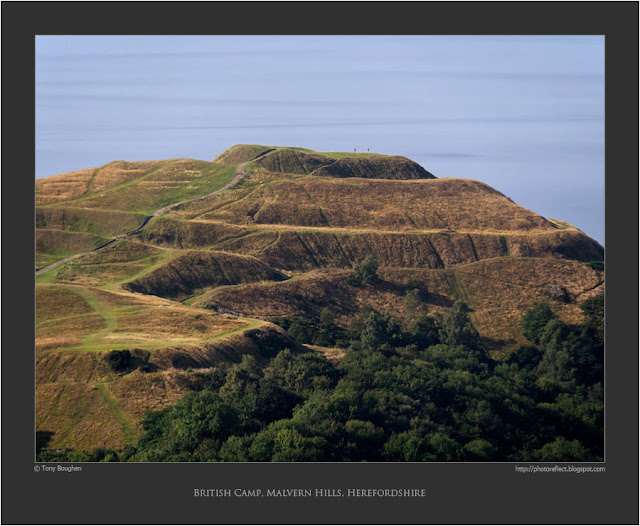Many years ago I came across a second-hand copy of "The Relative Hills of Britain" by Alan Dawson. The premise of this fairly slim volume is simple but interesting. It lists all of our island's hills that are high relative to the surrounding land - the qualification for inclusion in the book is that there must be a drop of 150 metres (492 feet) or more on all sides of the summit. Britain doesn't have particularly high mountains - Ben Nevis at 4,409 feet (1,344 metres) is the tallest. Nonetheless, there are many British so-called "walking enthusiasts" who consider it beneath them to climb anything below 2,000 feet (610 metres), the height at which a hill becomes a mountain. What this book helpfully does is list the "relative hills" on a regional basis and directs the attention of walkers to many "lesser" peaks that are significant and worth climbing.
I was reminded of this on a recent visit to Herefordshire as we walked up Black Hill, Pinnacle Hill and Jubilee Hill, three of the "saw tooth" peaks of the Malvern Hills, a low range that features in its pages. As we did so we looked back at Herefordshire Beacon, another of the "teeth", that is topped by the Iron Age hill fort called British Camp. The September sun was picking out the detail of the earthworks, paths and a couple of people on the grass-clad summit above the tree-line. We have walked to the top of the Beacon a couple of times and I've posted photographs I've taken from the top. On this occasion we were looking for different views over the surrounding countryside and more distant prospects of the ancient earthworks.
photograph and text © Tony Boughen
Camera: Olympus E-M10
Mode: Aperture Priority
Focal Length: 150mm (300mm - 35mm equiv.)
F No: f5.6
Shutter Speed: 1/1000 sec
ISO:200
Exposure Compensation: 0
Image Stabilisation: On

